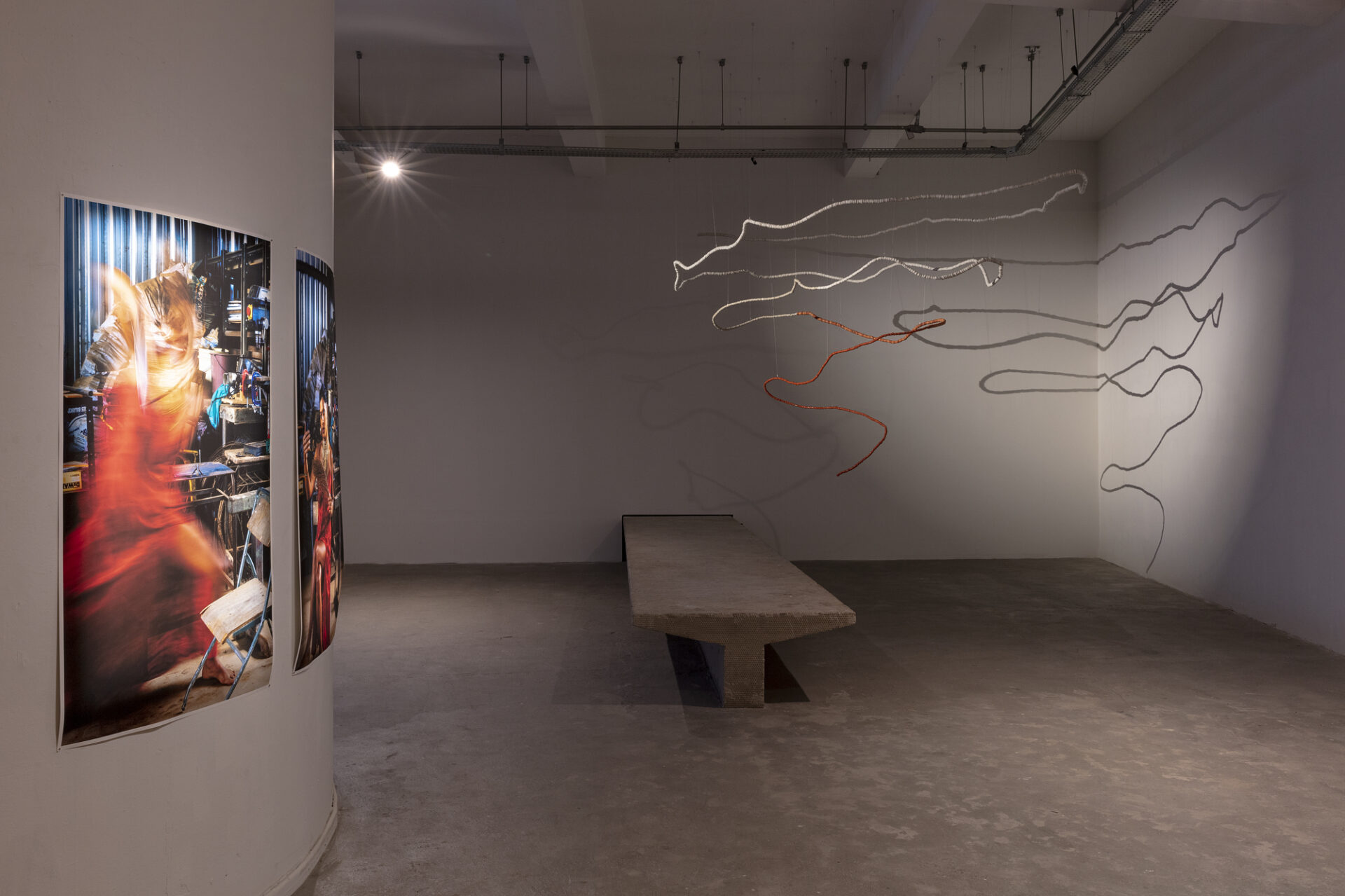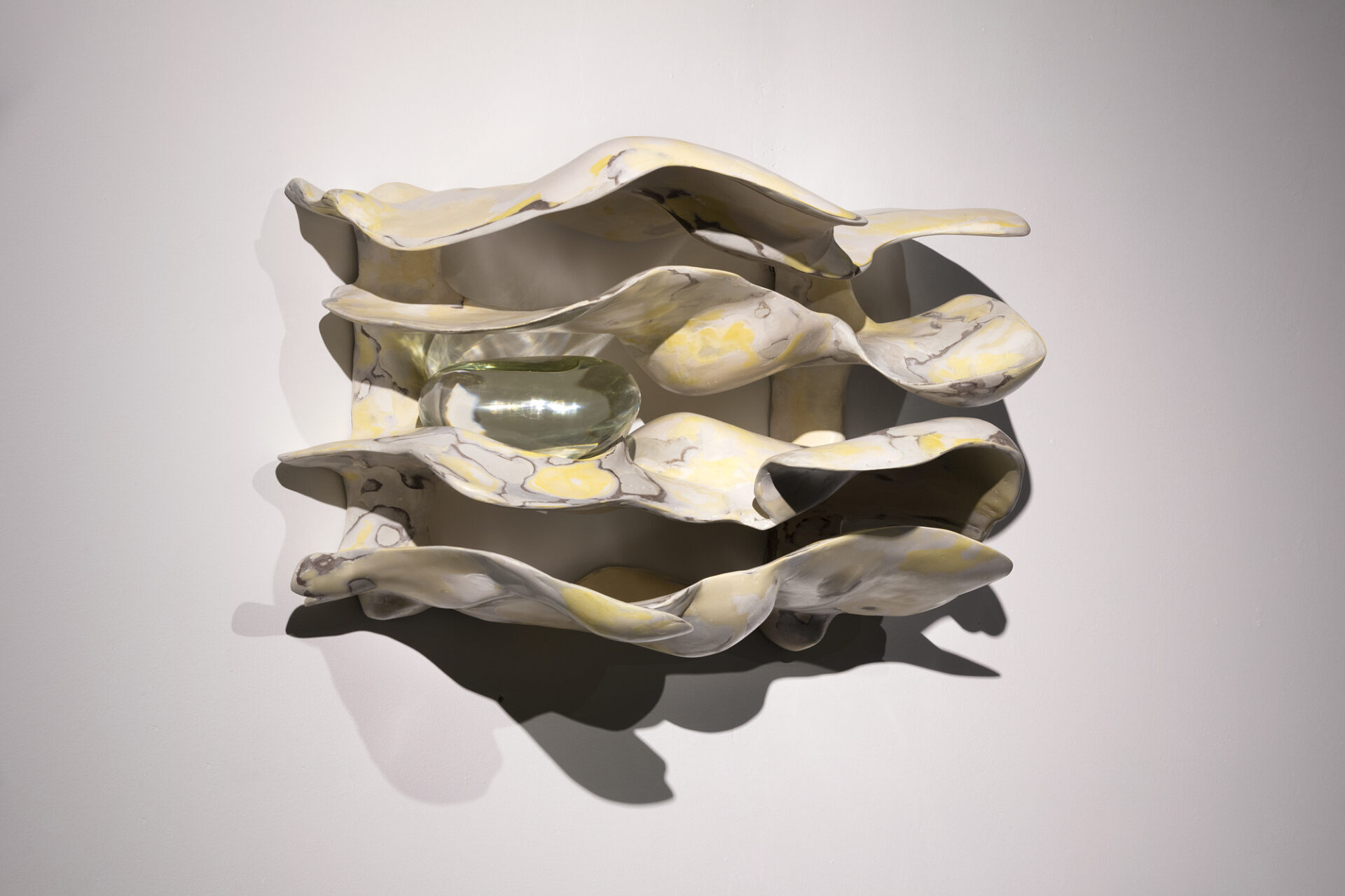
de montañas submarinas el fuego hace islas investigates the tools created by communities of people around the world who have thought and desired freedom from outside of the Western imagination. The exhibition is part of a curatorial research project that Yina Jiménez Suriel began in 2019, around the expansion of human subjectivities that contributes to the creation of new and different imaginaries. Over the past year, her research has focused on deepening the study of the perceptual system of the human species and on how aesthetic thinking can contribute to and alter its future. The exhibition aims to identify the trace or evolution of those aesthetic tools in contemporary artistic practices that are cumulatively materializing in the creation of “islands,” where people can live out new forms of relations with all living beings that inhabit the planet.
At Pivô, an exhibition, a publication, and seminars are activated through the image of three “mountain ranges.” The first is an island that serves as the site of the exhibition and a screening program; the second is a group of islands that forms a publication (written in Portuguese and English) containing reflections by linguists, curators, and writers who have been fundamental to the research; the third, which is imagined as an underwater mountain, is a series of live seminars, hosted in person and online, that focuses on the generation of imaginations in the human species.
Works in the exhibition are placed in relation to form “islands” of perceptual connections—live performances and their documentary forms, sculptural installations, photographs, and videos—that explore the emancipatory potential of materials, actions, and ideas. The works gathered at the exhibition aim to mobilize the spectator’s desire dimension as well as the productive potency of other imaginaries.
The exhibition is co-presented by Pivô and KADIST, as part of a collaboration that included support from KADIST which supported Yina Jiménez Suriel’s curatorial research and artist studio visits in Brazil during January of 2022.
Curated by Yina Jiménez Suriel
The exhibition is co-presented by KADIST and PIVÔ.
Artists: António Ole, Arquivo Mangue, Beatriz Santiago Muñoz, biarittzzz, Cauleen Smith, Dalissa Montes De Oca, Dineo Seshee Bopape, Duto Hardono, Elena Damiani, Gilson Plano, Jes Fan, Julius Koller, Juno B + Jonas Van, Karthik Pandian, Kiran Subbaiah, Laryssa Machada, LeoRD, loren minzú, Madeline Jiménez Santil, Nadia Huggins, Noara Quintana, Taloi Havini, Thaís Espaillat Ureña, Vanessa da Silva.
Authors [reader]: Marta Aponte Alsina, Yásnaya Elena Aguilar, Félix Servio Ducoudray, Suely Rolnik, Olivier Marboeuf, Marilia Loureiro, Yina Jiménez Suriel
KADIST is a non-profit contemporary art organization that believes artists make an important contribution to a progressive society through their artwork, which often addresses key issues of our time. Dedicated to showing the work of artists represented in its collection, KADIST encourages this engagement and affirms contemporary art’s relevance within social discourse. Through collaborations with international leading museums and via its local hubs in Paris and San Francisco, KADIST organizes exhibitions, physical and online programs, and hosts residencies. Supported by a global network of advisors, KADIST facilitates new connections across cultures and vibrant conversations about contemporary art and ideas.

 Português
Português




































